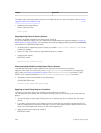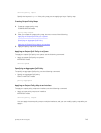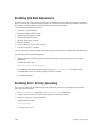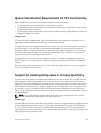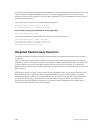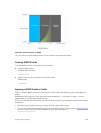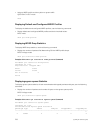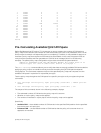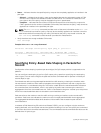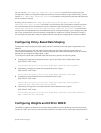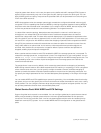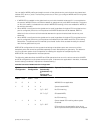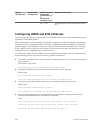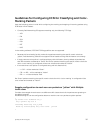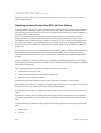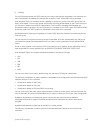
• Status — indicates whether the specified policy-map can be completely applied to an interface in the
port-pipe.
– Allowed — indicates that the policy-map can be applied because the estimated number of CAM
entries is less or equal to the available number of CAM entries. The number of interfaces in the
port-pipe to which the policy-map can be applied is given in parentheses.
– Exception — indicates that the number of CAM entries required to write the policy-map to the
CAM is greater than the number of available CAM entries, and therefore the policy-map cannot be
applied to an interface in the specified port-pipe.
NOTE: The show cam-usage command provides much of the same information as the test cam-
usage command, but whether a policy-map can be successfully applied to an interface cannot be
determined without first measuring how many CAM entries the policy-map would consume; the
test cam-usage command is useful because it provides this measurement.
• Verify that there are enough available CAM entries.
test cam-usage
Example of the test cam-usage Command
Dell# test cam-usage service-policy input pmap_l2 port-set 0
Port-pipe | CAM Partition | Available CAM | Estimated CAM | Status
=====================================================================
0 L2ACL 500 200 Allowed(2)
Specifying Policy-Based Rate Shaping in Packets Per
Second
Configuration of rate shaping in packets per second (pps) for QoS output policies is supported on the
platform.
You can configure rate shaping in pps for a QoS output policy, apart from specifying the rate shaping
value in bytes. You can also configure the peak rate and the committed rate for packets in kilobits per
second (Kbps) or pps.
Committed rate refers to the guaranteed bandwidth for traffic entering or leaving the interface under
normal network conditions. When traffic propagates at an average rate that is less than or equal to the
committed rate, it is considered to be green-colored or coded. When the transmitted traffic falls below
the committed rate, the bandwidth, which is not used by any traffic that is traversing the network, is
aggregated to form the committed burst size. Traffic is considered to be green-colored up to the point at
which the unused bandwidth does not exceed the committed burst size.
Peak rate refers to the maximum rate for traffic arriving or exiting an interface under normal traffic
conditions. Peak burst size indicates the maximum size of unused peak bandwidth that is aggregated.
This aggregated bandwidth enables brief durations of burst traffic that exceeds the peak rate and
committed burst.
In releases of Dell Networking OS earlier than Release 9.3(0.0), you can configure only the maximum
shaping attributes, such as the peak rate and the peak burst settings. You can now specify the committed
or minimum burst and committed rate attributes. The committed burst and committed rate values can be
defined either in bytes or pps.
752
Quality of Service (QoS)



